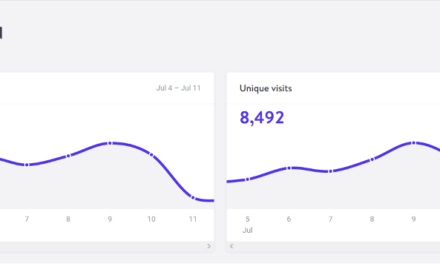Train your pelvic floor now so you can use it effectively when it’s go-time.
Florals: They’re not just for spring anymore. According to a report from Innova Market Insights, floral and botanical flavors (like chamomile, honeysuckle, and rose) will be the fastest-growing trend in packaged foods in 2024. The surge in interest, according to the report, is likely due to continued consumer interest in sustainability, plant-based ingredients, and functional health.
But unless you have the skills and knowledge of an herbalist or forager (hi, Alexis Nikole!) you might feel overwhelmed by the possibilities of using botanical ingredients at home to reap their benefits. Are they added to recipes for presentation, flavor, or health benefits? We’ve asked two reputable herbalists all the hard-hitting questions about these beautiful ingredients to get the full story, helping you to choose and use them at home.
What are botanicals and florals?
“Botanical and floral ingredients are fancy names for plants added to foods and beverages,” says Rosalee de la Forêt, herbalist, podcast host, and best-selling author of Alchemy of Herbs and Wild Remedies. “Botanicals may refer to entire plants—leaves, stems, roots, flowers, seeds, etc.—while florals refer specifically to flowers.”
“Botanical, floral, herbal (and fungal) ingredients are all considered ‘herbs’ by herbalists,” adds Rachelle Robinett, RH (AHG), an herbalist and the founder of Pharmakon Supernatural and HRBLS. “We consider all natural, non-synthetic ingredients with medicinal properties to be herbs, including food.”
In fact, you likely already have many common examples of botanical and floral ingredients sitting in your pantry right now. “Tea is a botanical, so are culinary herbs, spices, coffee, rose, lavender, turmeric, pepper, ginger, saffron…the list is endless,” says Robinett.
Herbal ingredients come in many forms, which are then be added to foods and drinks. “Oftentimes, botanicals and floral [compounds] are extracted using a solvent like water, alcohol, honey, or vinegar for mixing into recipes,” says de la Forêt. “Because florals are often beautiful, they also may be dried, candied, or otherwise used whole as a decoration on foods.”
Beyond a beautiful appearance and unique flavor, all botanicals and florals are filled to the brim with plant compounds, also known as phytonutrients, to offer a whole host of health benefits. “Most florals and botanicals are antioxidant, anti-inflammatory, and high in a variety of other beneficial compounds and/or nutrients,” says Robinett.
While these ingredients are having a resurgence in popularity, especially in specialty products, they are far from new. “People have been adding [botanicals and florals] to foods and drinks for as far back as we could possibly remember,” says de la Forêt. The Chinese emperor Shen Nung wrote a book in 2500 B.C.E. about using plants like ginseng and cinnamon as medicine. Ancient Egyptians reportedly had written records of medicinal plants way back in 1500 B.C.E. Indigenous peoples in what is now the United States long used native plants as part of their culinary, spiritual, and healing practices—many of which are still observed to this day.
Interested in learning more about herbalism? Robinett breaks it down in this video:
The benefits of popular botanicals and florals
1. Carnations
While often added to beautiful floral bouquets, many may not know that carnations are actually edible. The flower’s petals are loaded with plant compounds that support every body system, especially the immune system, boasting anticancer properties. It tastes surprisingly spicy, with a hint of clove flavor.
2. Chamomile
The tiny yellow buds surrounded by delicate white petals of chamomile are easily recognizable to many of us. “Chamomile is a nervine, supporting calmness, as well as digestion enhancer,” says Robinett. It contains a flavonoid called apigenen, which can help the body relax—which is chamomile is so popular for supporting sleep.
3. Elderflower
The ethereal nature of elderflower’s clustered dainty white buds are nothing short of stunning. But this gorgeous flower offers more than just fruity flavor in cocktails and mocktails. “Elderflower is used for breaking fevers, and for viral illnesses, especially in children as it’s gentle,” says Robinett. “Elderflower contains a lot of antioxidants and is a common medicinal herb for cold and flu symptoms,” adds de la Forêt.
4. Hibiscus
As a popular tea ingredient, the brilliant deep pink hue of the large hibiscus flower is hard to miss, as is its cranberry-like sweetness. But hibiscus is also super high in antioxidants, benefitting our immune system and heart health. In fact, it’s known to help to support healthy blood pressure and cholesterol levels. (Hibiscus tea might also help you sleep better!)
5. Lavender
This is one of the most popular floral ingredients to add to food—although the flavor sometimes comes on too strong for some taste buds. But if you love it, keep enjoying it, because it has tons of benefits. “Lavender is considered a ‘nervine’ herb, which means that it’s beneficial for the nervous system,” says Robinett. This is why it often has a calming effect on so many people. Robinett also shared that this floral is a nootropic, which helps to enhance memory and cognitive function.
6. Marigold
The brilliant orange color of marigolds have been utilized for hundreds of years as a natural dye for textiles. But this relative of calendula offers an interesting citrusy, peppery flavor that is super tasty in many recipes. Plus, research has found this flower to serve as a potent antiseptic and treatment for wounds.
7. Nasturtium
This dainty flower is often found in bright yellow, orange, and red colors. But aside from its beauty and peppery taste, nasturtium is packed with micronutrients like potassium, calcium, phosphorus, magnesium, zinc, copper, iron, and vitamins C, E, and A. These nutrients combine to support optimal immune, heart, bone, and cell health.
8. Rose
I don’t think we need to explain how the romantic rose looks or smells. But did you know that when added to foods, rose can also offer quite a few notable benefits? “Rose is another nervine as well as an astringent, or internal and topical toner,” says Robinett. Internal astringents work to reduce systemic inflammation.
How to use botanicals in your home cooking
With this new-found knowledge on which botanicals are edible and beneficial to our health, you may be itching to give them a try in the kitchen. But where should you start?
While there are a handful of floral-enriched products on the market, making them at home is not only more fun but will result in major cost savings. “With florals’ increasing popularity also comes some exorbitant prices. If you want to skip overpriced items at the supermarket, consider making your own for a fraction of the price,” says de la Forêt.
Many of the above-mentioned options are widely available online, and can be found in select grocery and health food stores, too. You can also find edible flowers at a floral shop, but be wary of these options as many are grown with the help of chemicals that you don’t want to be ingesting. If they are grown organically, then these options can be used in the kitchen.
Once you have your florals home, there are so many delicious ways to utilize them—either in their extracted or whole form—in a variety of recipes. “This could be something really simple like a tea or other water-based beverage. Or it could be something fancier or more specialized like bitters for cocktails or mocktails, cooked into baked goods, or made into treats like botanical chocolates,” says de la Forêt.
Petals of these edible flowers can also be pressed into baked goods like cookies and cakes or sprinkled onto scones, smoothies, waffles, and salads. They’re also super yummy in jams, popsicles, and sorbets. Some even like to freeze these florals into ice cubes to easily add sophistication to any beverage.
In terms of how much you should add to your recipes, go based on your taste preferences. You’re more likely to make your recipe taste like soap before edging even close to a level that may not be supportive of your health.
While botanicals and edible flowers are certainly beautiful to look at, their flavor and health benefits are even more impressive, illustrating why it’s no surprise that they’re anticipated to be super trendy in the New Year.
Excited to start playing with botanicals and florals? Check out this homemade herbal tea recipe:
Recommended Story For You :

The alpine secret for healthy weight loss

The Most Potent Fast-Acting Formula For Incinerating Stubborn Fat

Real Cortexi Users Real Life‑Changing Results

This Cold Drink Might Trigger Your Prostate

Red Boost is a powerful new formula for boosting male sexual health.

Everything you eat or drink eventually reaches your liver for processing.

Brand New Probiotics Specially Designed For The Health Of Your Teeth And Gums

Empowering You to Take Control of Your Blood Sugar Health!

Scientists Finally Discover the Root Cause of Belly Fat and Unexplained Weight Gain






